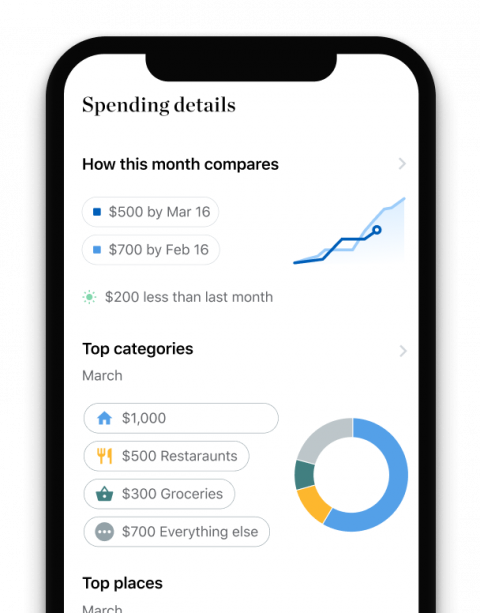For-Profit Colleges Will Be Held Accountable for Student Outcomes

Many or all of the products featured here are from our partners who compensate us. This influences which products we write about and where and how the product appears on a page. However, this does not influence our evaluations. Our opinions are our own. Here is a list of our partners and here's how we make money.
The government is beefing up its scrutiny of for-profit colleges and improving financial transparency for all higher education institutions.
On Sept. 27, the Department of Education announced it had finalized new oversight rules with two major provisions:
Gainful employment. The Education Department will analyze for-profit educational programs, like career training certificates, to determine if they are affordable and provide meaningful financial returns for students. Programs that fail to meet certain standards could be kicked out of the federal financial aid system.
Financial value transparency. The Education Department will collect and publish college- and program-level data about out-of-pocket costs and student financial outcomes for all educational institutions (public, private, for-profit). Borrowers who wish to access federal financial aid to attend low-performing institutions must review and acknowledge this data.
“These protections are about ensuring career college programs live up to higher education’s promise as a pathway to a better life,” Department of Education Under Secretary James Kvaal said in a September press release. “Students overwhelmingly say that they’re going to college to find a good job and build financial security, but too often their programs leave them no better off financially than those with no postsecondary education at all.”
For-profit institutions have been the focus of several lawsuits alleging the institutions misled and misrepresented their value — leaving borrowers with overwhelming debt without adequately preparing them for well-paying jobs. Billions of dollars in federal student loans have been forgiven through the borrower defense program in an attempt to recoup students' losses.
These new rules will go into effect on July 1, 2024, and the first official financial outcome rates will be published in early 2025. As a result, an estimated 700,000 students each year won’t enroll in one of nearly 1,700 low-performing programs that could lose access to the federal student aid system under the new rules, the Department of Education says.
Here are the key program details.
Programs must achieve ‘gainful employment’ metrics to access federal financial aid
For-profit institutions, career training programs and public or private programs that don’t grant degrees are required to adequately prepare students for “gainful employment” to access federal financial aid, under the Higher Education Act, which is the law that governs the federal financial aid system.
Under the new rules, the Education Department will assess these types of schools on two key metrics in an attempt to decrease the number of students left with excessive debt compared to earnings. Low-performing institutions could lose access to federal financial aid.
The Department of Education will require institutions to meet performance standards in two areas:
Debt to earnings. The share of a graduate’s annual income needed to make their student debt payments cannot exceed 8%. For graduates on income-based repayment plans, their debt-to-earnings ratio must be less than 20% of their discretionary income — defined as income above the 150% federal poverty guideline (about $21,870 in 2023). This metric assesses student loan affordability.
Earnings compared to high school graduates. An institution must have at least half of its graduates earning more than the typical high school graduate with no postsecondary education. Graduate income is compared to the typical high school graduate aged 25 to 34 in the institution's state labor force.
Failing one metric will force the institution to alert students that the program may lose access to federal aid. If a program fails to achieve both metrics twice within three years, the program will completely lose access to federal aid.
The reporting requirement starts on July 1, 2024, and the first round of outcome rates will be published in early 2025. Programs that fail to meet the same metric in the first two years the rates are issued will be booted from the federal financial aid system as early as 2026.
Public access to more detailed college-level data
Under the new rules, the Education Department demands greater consistency in reporting the cost and return of postsecondary education. This provision is called “Financial value transparency.”
By collecting more detailed data on the cost of attendance, potential earnings and typical debt, the federal government wants to equip students and families with information that can help them avoid difficult debt burdens.
New data collected will include the following:
Cost of tuition, fees, books and supplies.
Licensing requirements and exam passage rates (if applicable).
Nonfederal aid amounts per student.
Typical amount borrowed — for both federal and private loans — per student.
Typical earnings per student.
Information will be made public on a Department-run website. Students will have to acknowledge they’ve reviewed these data points before receiving federal financial aid from colleges or programs that don’t meet federal standards for earnings.
The reporting requirements will begin July 1, 2024; the website will launch afterwards, and acknowledgment requirements will start in 2026.
Additional provisions
A few additional provisions to protect student borrowers are still in the works, and the Education Department has not yet finalized them. Still in their draft form, these provisions could include:
Financial responsibility. Institutions must report behavior that could indicate a higher risk of closing suddenly — such as failing to make debt payments for more than 90 days. Certain financial triggers could lead the Department of Education to require a letter of credit from the institution to guarantee payment.
Administrative capability. There will be greater requirements for college administration programs, like career services and financial aid offices. Proposals would also include preventing administrators with previous misconduct around federal financial aid programs from being hired.
Certification procedures. The Department of Education would like to be able to more easily adjust its agreements with institutions receiving federal financial aid.
The regulations would also make adjustments to “Ability to Benefit” — a provision of the Higher Education Act that allows students without a high school diploma to access federal financial aid.
On a similar note...
Powered by



